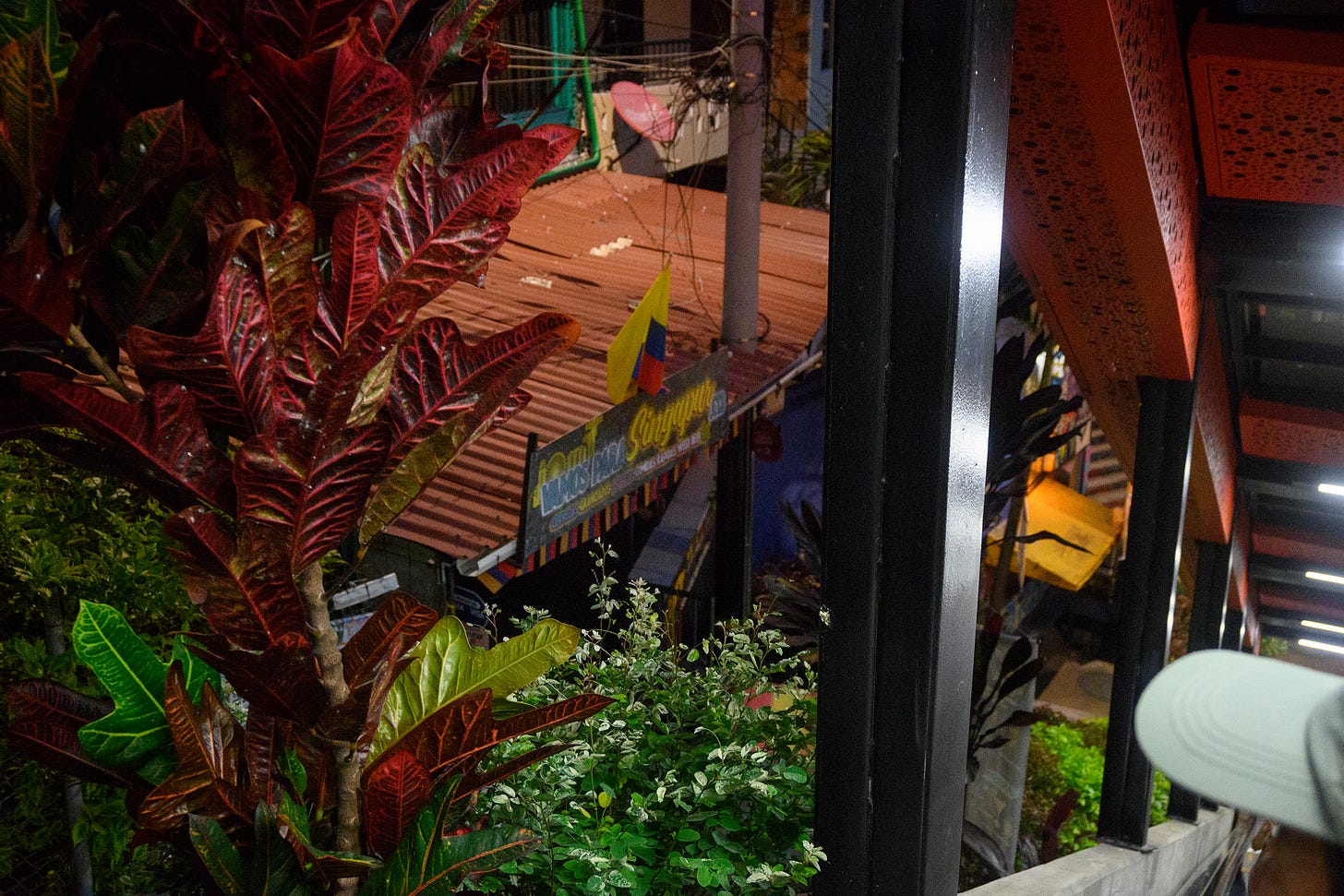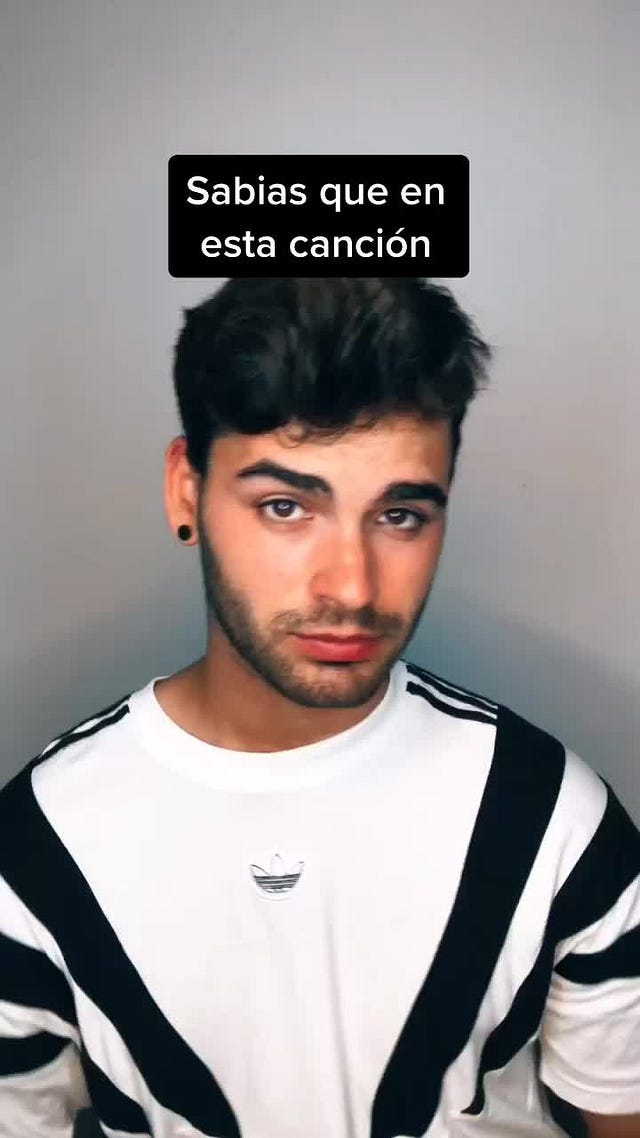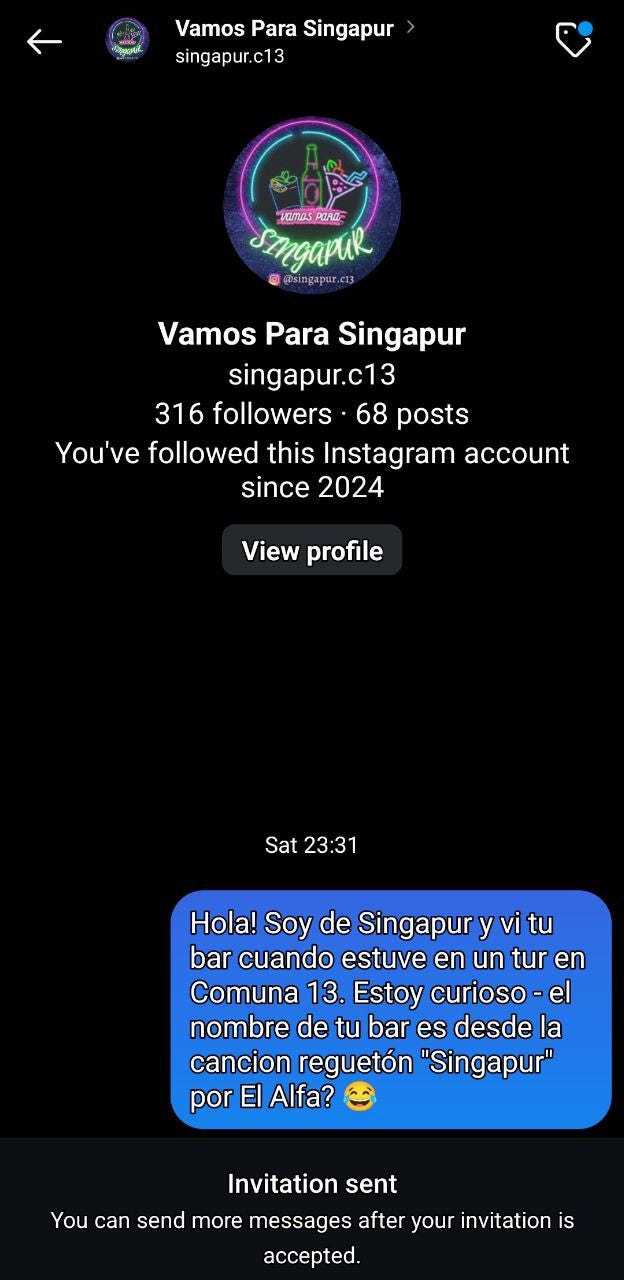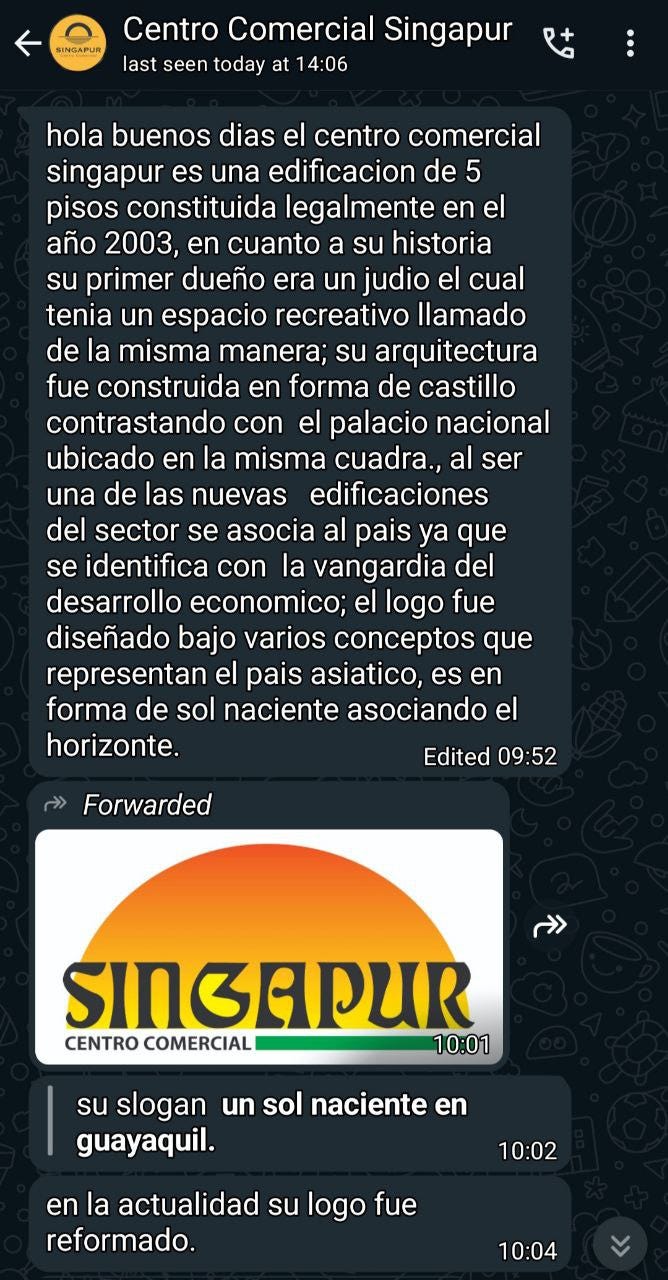One of the first activities Adelle and I did in Medellín (our first stop in Colombia) was to go on a walking tour of Comuna 13 (also known as San Javier).1 Although it is a very touristic district in Medellín today, Comuna 13 had a violent past, as different guerilla and criminal groups sought to control territory there for their own illicit purposes including drug trafficking.2 The subsequent transformation of this district into a safe place since the 2000s—with public infrastructure like schools and proper walkways built for its residents—is what the many tours about Comuna 13 focus on showcasing. Correspondingly, the central area around the famous escaleras eléctricas (escalators) in the district is now filled with souvenir shops, cafes, bars and hordes of both foreign and domestic tourists.
I shan’t talk further about Comuna 13 (there are ample reference materials online) because what I wanted to write about was just a particular store that we saw on the tour. While we were on the escalators going up the hillside, I suddenly spotted a sign with the word “Singapur” (Singapore) in bright yellow.
On a closer look, the sign said: “Vamos para Singapur”, which can mean “we’re going to Singapore” or “let’s go to Singapore”. It was the name of a bar, as the other words below it highlighted the products that were on sale there: beers (cerveza), cocktails (cócteles), shaved ice (granizados), fast food (comidas rápidas) and “weed beer” (with a cannabis leaf in case there was any ambiguity).


Although we were curious about why the bar chose this particular name, we didn’t give it further thought. After all, it wasn’t the first time we saw a business featuring Singapore in its name—while in Cabo San Lucas in Mexico, we also walked past a night club called “Singapur Night Club”.
Later on, at a language exchange that we went to hosted by our Spanish language school in Medellín, Adelle brought up the name of this bar to some Colombians, who shared that the name was actually taken from a reggaeton song!
Titled “Singapur”, this song was released by El Alfa, a Dominican rapper, in May 2020. The song seems popular (or at least was popular at one point), with the official music video on YouTube garnering more than 350 million views. Even the 12-year-old boy who was our “guide” for a separate tour in the La Sierra neighbourhood has heard of this song!
My curiosity now intensified, I went to watch the music video more than a few times, as well as to parse the lyrics, hoping for some clues about what Singapore had to do with the song. All I could see in the video was El Alfa acting as the leader of a jungle village, with lots of dancing women amidst lush foliage—a far cry from the concrete jungle that is Singapore. The lyrics didn’t offer much too. The best I could glean with my basic Spanish were some suggestive phrases, such as the following verse:
Vamos para Singapur
Ven, mami chula, que te vo’ da’ un tour
El tanque e’ gasolina, yo lo tengo full
Ven-ven, vámono’ pa'l tour-tour
It translates to:
Let’s go to Singapore
Come, hottie, I’ll give you a tour
The tank of gasoline, I have it full
Come come, let’s go on the tour tour
With no much to show for my efforts besides the chorus of the song now becoming an earworm, I went to Google to try to find an answer: “¿Qué significa ‘Singapur’ en la canción ‘Singapur’ por El Alfa?” This led me to a couple of TikTok videos in Spanish from 2020, which hinted or stated that “Singapur” was a double entendre.
The reference to Singapore is a play on the word “singar” or “chingar”, which are slang words in the Dominican Republic and certain Latin American countries that mean “to fuck”. As one commenter put it in this Reddit thread about the song, “vamos para Singapur” can thus be construed as “let’s go to fucktown!” I, however, prefer to imagine it as “let’s go fuck, purrr” (in a sultry voice), given how El Alfa rolls the “r” in “Singapur” in this verse. 🤣🤣🤣
Although the mystery has finally been solved, I thought to have a little more fun by messaging the “Vamos para Singapur” bar on Instagram and asking them to confirm whether the name of their bar was from El Alfa’s song. Unfortunately, as of the time of writing, they haven’t responded to me yet. 🥲🥲🥲
On a related note, while Googling, I also saw that there has been allegations of plagiarism against El Alfa for “Singapur”. According to this article, El Alfa was sued by a young Dominican musician, Chileno RD, who claimed that he had composed and produced the song and submitted it to El Alfa’s music producer for a competition in 2020. Chileno RD was later blocked by the producer, and months later, El Alfa released the song under his own name. I’m not sure what happened to the lawsuit, but wow, so much drama with regard to this song.
In any case, our encounters with Singapore in Medellín didn’t just end here.
Separately, while typing “Singapur” on Google Maps, I also discovered that there was a shopping centre in Medellín named after Singapore: Centro Comercial Singapur. Again curious as to “why Singapore?”, I found their WhatsApp contact through their social media accounts and wrote a message.
Thankfully, unlike the bar, they replied quickly. They simply wanted to name their development after a country that is at the forefront of economic development and thus Singapore was chosen. What an honour!
In addition, we also met a Singaporean for the first time since we’ve been in Latin America here in Medellín—on a walking tour of the city centre of all places! She was just visiting the city on a weekend trip with her fiancé, which was only possible because she was based in the US. Regardless, it was a pleasant surprise as Adelle and I had been talking about whether we would even meet any Singaporeans while we were in South America.
We’ll definitely keep our eyes (and ears) peeled for more Singaporeans as we continue our travels around the continent.
Eugene
Comuna 13 is one of 16 comunas (communes) in Medellín. Each of these administrative districts are further subdivided into barrios (neighbourhoods).
This violence was not unique to Comuna 13. Many districts in Medellín were also consumed by what was effectively guerra urbana (urban warfare), with the city as a whole descending into a dark period of violence that arose with the advent of the illegal drug trade in the 1970s. The history of this period, whose ramifications still persist to this day, is complex as there were many different players involved—drug cartels, leftist guerillas, right-wing paramilitaries, criminal gangs of various sizes and affiliations, and of course, the Colombian state. This report by InSight Crime provides an overview of how the criminal landscape in Medellín has evolved since the 1970s to today, through the life of a former hitman for Pablo Escobar’s drug cartel, the Medellín Cartel.







